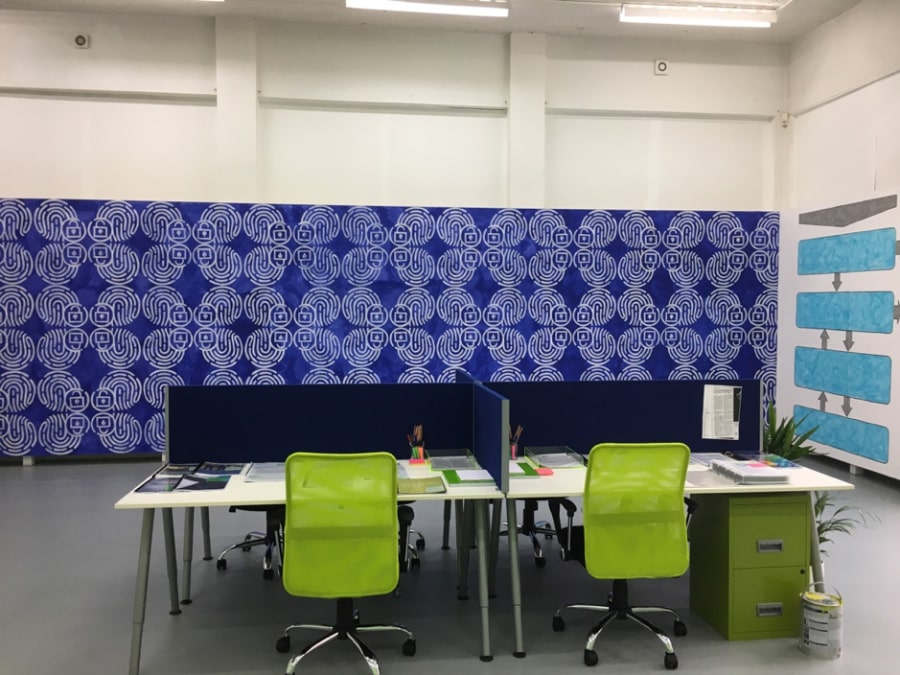It has long been my contention that the government’s controversial counter-terrorism strategy, PREVENT, rather than preventing the violent extremism it sets out to deter, is in fact more likely to silence healthy discussion and debate, thereby creating the very conditions for the resentment that might lead to violent action. This week, it has been reported that research carried out by academics at SOAS, University of London, has found that the language of fear and suspicion in the PREVENT Strategy has impacted the perspectives of students, leading to them being more likely to hold anti-Muslim sentiments. Moreover, the research found that only 25 per cent of students interviewed said that they felt “entirely free” to discuss Islam openly on campus, with many describing the need to “self-censor”.
In 2019, I worked with artist Navine G. Khan-Dossos on a site-specific installation at The Showroom in Paddington, London, that sought to explore life in a PREVENT culture. The exhibition was entitled “There Is No Alternative” (echoing the famous words spoken by Margaret Thatcher about cuts to public spending, and highlighting the way in which governmental rhetoric often presents ideological choices as inevitabilities). Khan-Dossos painted the walls of The Showroom with the logos of current and past Prevent campaigns, overlapping patterns that suggest surveillance and securitization. (Hands, eyes, and padlocks feature heavily.) In the middle of the exhibition space, a collection of dossiers of PREVENT-related material from different public sectors and bodies were set out on office-style tables, emphasising the bureaucratic nature of such strategies.

Visitors to the exhibition – including local residents from the largely Muslim area of London – were encouraged to reflect upon their relationship with PREVENT. Workshops, events, and debates were scheduled over the duration of the exhibition, including a debate I chaired on the ways in which PREVENT might impinge upon freedom of expression and thereby harm the wellbeing of the nation. Predicting the findings of the research published this week, many of the speakers at the events expressed the view that PREVENT is intrinsically Islamophobic and encourages suspicion and stigma. Such is certainly the view of Dr Shazad Amin, retired consultant psychiatrist and CEO of MEND, who talks about Muslims “self-censoring” rather than critiquing the workings of PREVENT, as they do not want to be seen as terrorist sympathisers. Another collaborator on the exhibition, Dr Rob Faure-Walker, a teacher and education researcher whose work on PREVENT in schools parallels the SOAS findings from universities, has described how, in Muslim-majority schools, once pupils were made aware of their teacher’s counter-terrorism reporting duty, they were less likely to be willing to discuss concerns, such as those regarding British foreign policy.
The findings from SOAS come at the same moment as a very public row about the importance of freedom of expression and the existence of alleged threats to it. A recent open letter published in Harper’s, authored by a number of prominent writers including Salman Rushdie, Margaret Atwood, and J. K. Rowling, discusses the prevalence of so-called “cancel culture”, an environment in which those whose opinions diverge from the accepted, left-wing “woke” consensus or are deemed offensive may find themselves subject to vicious social media attacks and de-platformed. The letter was followed by a number of responses denying that “cancel culture” exists at all, or that the prevailing tendency on the left is one of censure, authoritarianism, and intolerance of differing perspectives. Specifically, a counter-letter was produced, signed mainly by writers, academics, and journalists of colour, which argued that the signatories of the original letter in fact sought the freedom to speak without consequence, and that they occupied positions of economic power and cultural capital which they did not wish to see challenged. This debate is, however, unlikely to go away as accusations of a creeping tendency towards censorship are repeatedly evoked as a feature of both the left and right wings of politics.
It is time, perhaps, for a calm national conversation about the stakes of free expression – and such a conversation has to include an evaluation of the benefits and harms of PREVENT. If preventing any discussion of Islamic ideology leads to suspicion and intolerance of all Muslims, as the SOAS findings suggest, we would do well to learn from the principle revealed and to apply it more broadly to our cultural attitude towards diversity of opinion.
Image credit: Navine G. Khan-Dossos, There Is No Alternative. Installation view, The Showroom, July 2019. Photograph by Lisa Downing